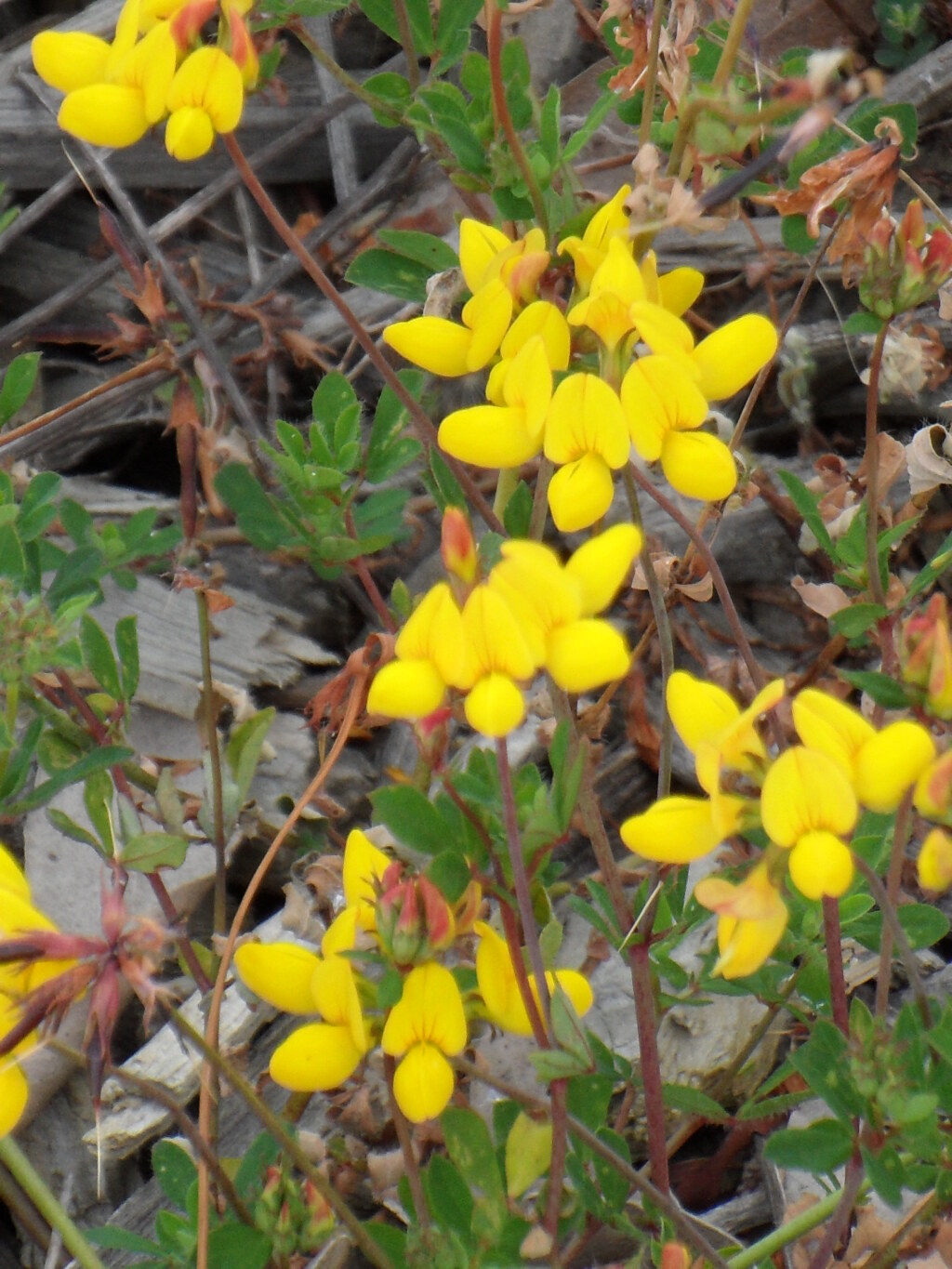Lotus subbiflorus
LagProstrate or ascending annual herb; stems to 70 cm long, with dense long spreading hairs. Leaflets somewhat dimorphic, pilose; basal 2 ovate to lanceolate, 4–12 mm long, 2–8 mm wide, apices acute; terminal 3 narrowly obovate, 5–20 mm long, 3–10 mm wide, apices acute or obtuse. Inflorescences mostly 1–4-flowered; peduncle 0.5–5.5 cm long; calyx obconical, 4.5–6.5 mm long, pilose, teeth erect in bud, about equal, longer than tube; corolla 6–9.5 mm long, yellow; standard obovate, equal to or shorter than keel; keel obtusely bent on lower edge at base, beak long and straight. Pod terete, 0.8–1.5 cm long, 1–2 mm wide, glabrous; seeds 4–14, subglobose, c. 1 mm long, brown or olive-green, mottled. Flowers Nov.–Mar.
GleP, Brid, VVP, VRiv, MuF, GipP, OtP, WaP, Gold, CVU, DunT, EGL, EGU, WPro, HSF, HNF, OtR, Strz, VAlp. Scattered widely through higher rainfall parts of southern Victoria, mostly in pastures and grassland.
Jeanes, J.A. (1996). Fabaceae. In: Walsh, N.G.; Entwisle, T.J., Flora of Victoria Vol. 3, Dicotyledons Winteraceae to Myrtaceae, pp. 663–829. Inkata Press, Melbourne.
 Spinning
Spinning


